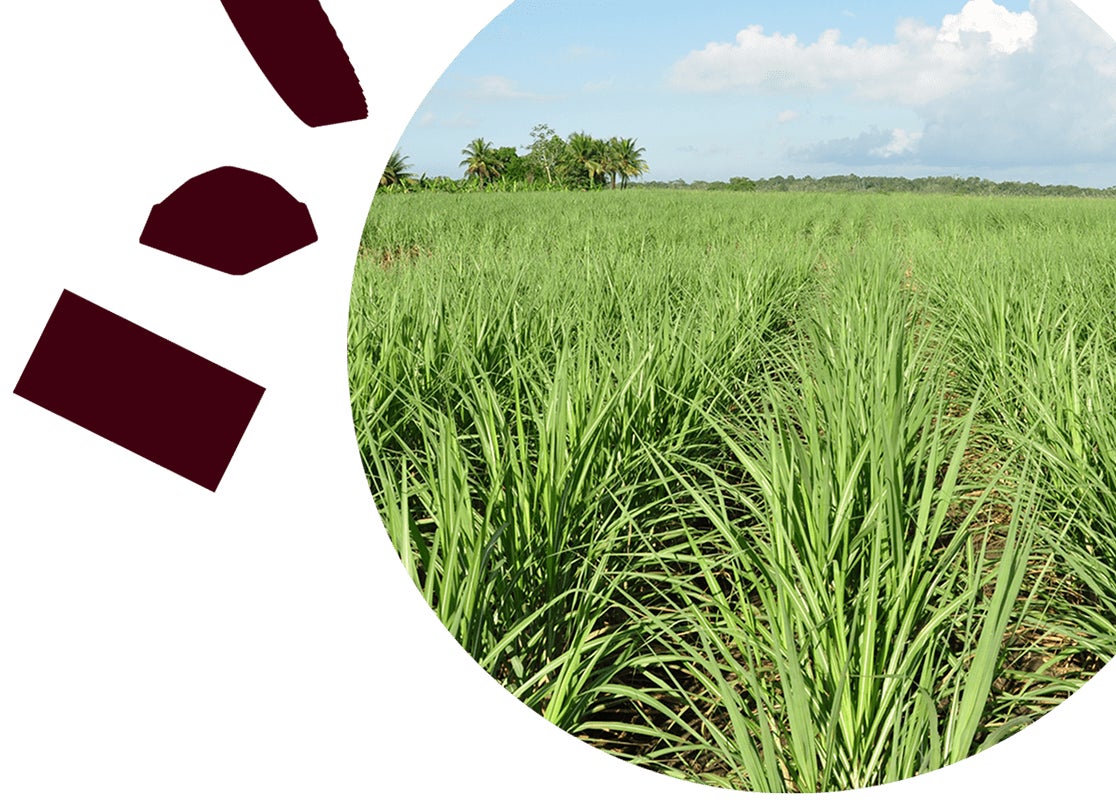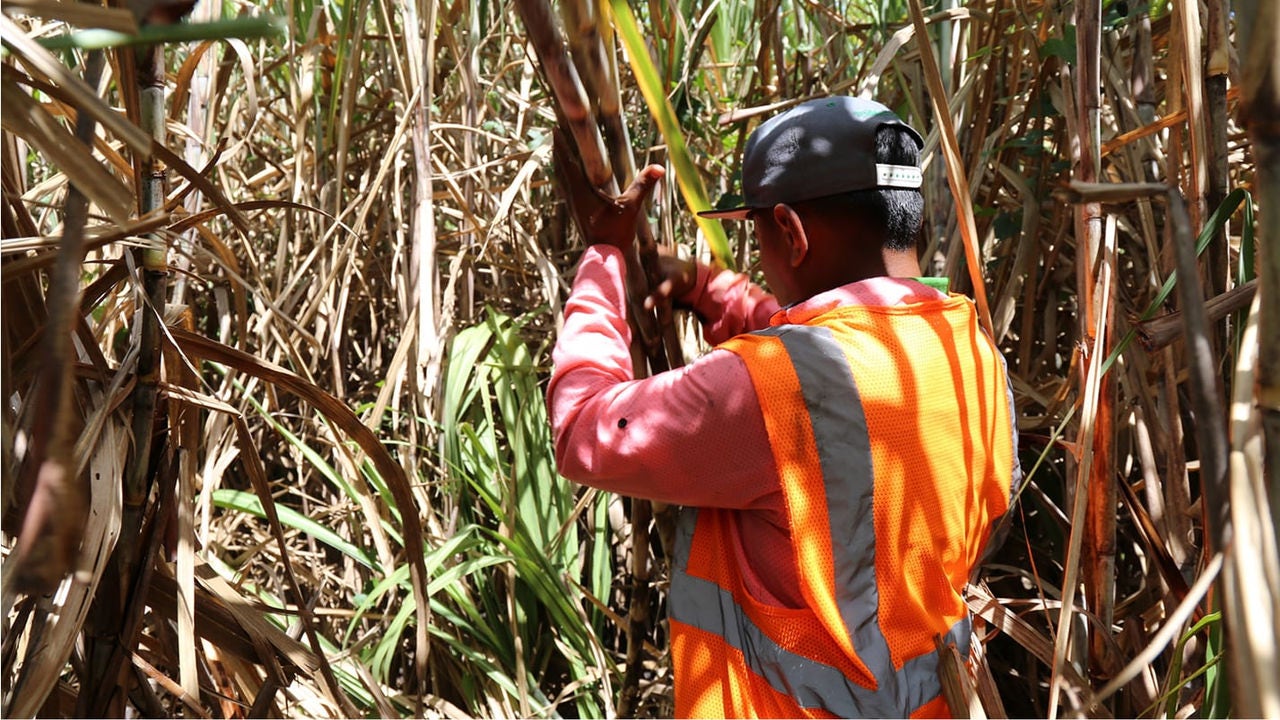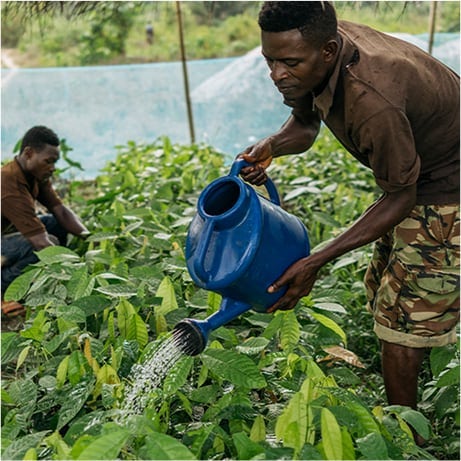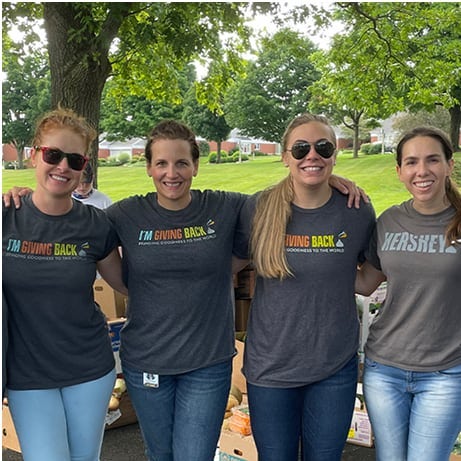Responsible Sourcing
Our Responsible Sourcing Strategy guides how we positively contribute to the resilience of the communities and ecosystems we depend on to source ingredients, manufacture and deliver our products.

Our Responsible Sourcing Strategy, which is guided by our commitments to human rights and the environment, is designed to move beyond risk mitigation and compliance to deliver positive impact and long-term resilience in Hershey’s end-to-end supply chain. We do this by working closely with our suppliers, farmers and industry partners. Collaboration with our global network of Hershey-owned operations, suppliers and business partners is critical in executing our strategy and making sustainable, systemic progress.
Our Responsible Sourcing Strategy includes four key focus areas:
Fostering Sustainable Agricultural Communities
Hershey’s beloved brands rely on ingredients and raw materials grown and provided by millions of people all over the world. Hershey is committed to reducing the environmental impacts of sourcing our ingredients and raw materials and building resilient agricultural communities by addressing the social and economic challenges they face. Learn more about our Priority Ingredients and Raw Materials below.
Responsibly Sourcing Goods and Services
Hershey is committed to delivering a resilient supply chain, and we count on our vast network of suppliers and business partners around the globe to help us. We engage our suppliers around the expectations set forth in our Supplier Code of Conduct, including respecting human rights and reducing their environmental impact. Read more about our Responsible Recruitment Program.
Promoting Transparency
Hershey is committed to knowing and understanding where, how and who grows and manufactures the ingredients and raw materials that make up our Hershey products. We map our supply chain so we can best invest in the people and ecosystems we rely on and measure, communicate and share the progress of our investments.
Building Hershey Capabilities
The integration of Hershey's Responsible Sourcing Strategy across the enterprise is integral to our business strategy and long-term success. We provide our remarkable people across Hershey with training, tools and technology to achieve our Responsible Sourcing commitments.

Priority Ingredients and Raw Materials
Each ingredient presents unique sourcing challenges and risks since sustainability and labor practices vary across commodities and by region. By understanding the risks that are specific to each raw material and region, we can better use our scale and resources to safeguard human rights and protect the people and ecosystems behind the ingredients that make up our iconic, delicious snacks.
Hershey targets our efforts on those areas where we can make the biggest impact while reducing risks in our supply chain. Our plan and approach for each ingredient considers a number of issues that are material to our business, including human rights, farmer livelihoods, GHG emissions, deforestation, biodiversity, water and soil health, as these are often interrelated issues.
Our priority ingredient management strategies are underpinned by the following principles:
- Supply Chain Traceability: Know the origin of raw materials to improve visibility into our supply chains and understand opportunities for impact. 1
- Supply Chain Monitoring And Verification: Communicate our expectations to suppliers and strengthen their sustainability management by using third-party certification and verification schemes to monitor performance and drive continuous improvement.
- Origin Transformation: Create measurable, responsible and sustainable transformation by investing in origin-level programs focused on environmental, social and economic issues.
- Operational Excellence: Utilize internal processes, policies, training, data, technology and purchasing practices supported by governance.
- External Engagement: Collaborate with external stakeholders to drive systemic change, as companies cannot solve these complex sustainability challenge alone.
* We also have achieved 100 percent certified coconut as of December 2022.
1 Traceability is not a chain of custody concept and does not alone allow Hershey to identify the specific source from where the ingredient comes in a given Hershey product.
Read more about each of our priority ingredients:
Responsible Sourcing Resources
For more information, you can contact us at: responsiblesourcing@hersheys.com
- Supplier Code of Conduct
- Translations available in: Behasa Melayu, Chinese, French, Hindi, Japanese, Korean, Portuguese, Spanish, Tamil, Telugu
- Environmental Policy
- Human Rights Policy
- No Deforestation Policy





